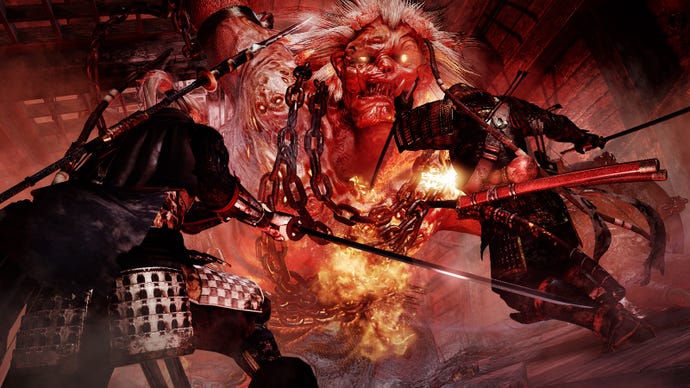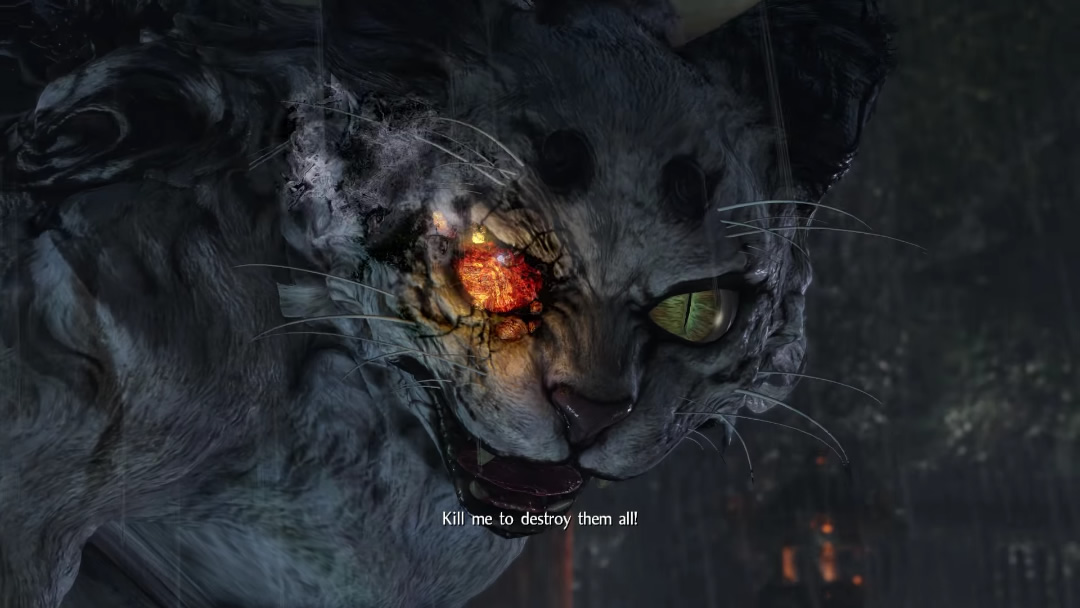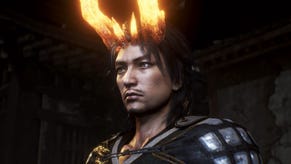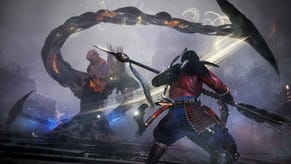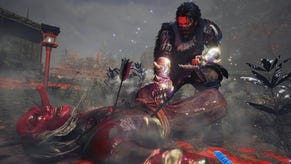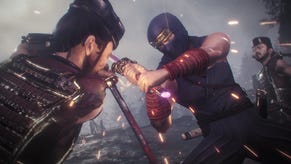If you’re playing Nioh like Dark Souls, you’re doing it wrong
Let's count all the ways Nioh is better than Dark Souls.
"The combat system is surprisingly intricate; Nioh is an exceptionally deep RPG, and seasoned Souls players are in for a surprise if they go in with any preconceptions. It’s an entirely new beast altogether."
At first glance it’s easy to mistake Team Ninja’s Nioh for a Dark Souls clone, with its oppressive atmosphere and a difficulty level that’s so unforgiving it’d refuse to give you a reprieve even if you were on your deathbed. Of course there are some similarities, but if you pussyfoot your way through the game like an anguished nameless undead, you’ll be missing out.
Nioh began life as a JRPG, and after a short stint as an action-oriented Warriors-style title,Team Ninja was brought on board to have a crack at salvaging the project. The studio has previously worked on Ninja Gaiden and Hyrule Warriors, so action games are its bread and butter, and with it, they made a delectable sandwich of compromise with a satisfying RPG filling.
The prologue sets up the story nicely, giving the protagonist William a kick up the butt that will propel him to the shores of Feudal Japan, but it will throw players who have had hands-on time with the alpha and betas for a loop.
William bumbles around the cold, stony interior of the Tower of London, with the flash of a Ki Pulse and flourish of a stance change nowhere to be seen; he fends off Beefeaters and the occasional silent, insurmountable knight. It looks and feels very much like a Souls game.
But not for long. The parallels between the titles are borne from certain aesthetics and concepts, like the Shrines, ‘souls’, and player gravesites. But looking past the surface, they couldn’t be more different.
Shortly after facing the first boss, you’ll be whisked away to the comfortingly familiar bosom of Japan and find that the combat system has had an overhaul, with stances, Ki, Ninjustu and Onmyo Magic now all threads in the rich tapestry of ass whooping.
William’s stamina bar no longer refills at a crawl. Having metamorphosed into Ki, it surges with the beat of each successful Ki Pulse, encouraging you to dance in and out of the enemies’ range, giving you carte blanche to go to town on them. Think of it as the equivalent of the Gears of War Active Reload for your stamina bar.
For me, it’s this mechanic that draws a line in the sand between the dogged, lengthy stand-offs in Dark Souls and the fast-paced action of Nioh. If you’ve watched videos of the more skillful players in action, it has more in common with the quickfire combos and frantic momentum of Ninja Gaiden. And that’s very welcome.
The Dark Souls series is notoriously difficult, and the gameplay can sometimes feel a little cumbersome and restrictive, even more so once you choose a class and build. It can be a royal pain in the butt to veer off-piste and experiment with a new weapon or abilities.
Nioh neatly circumvents that problem by presenting you with a somewhat preset class; William is a samurai. That’s his jam, and now it’s yours.
What Nioh lacks in class types, it makes up for in nuanced layers that build on the basics. The variety stems from the weapon types and abilities. Each one has its own skill tree and you can pretty much wield anything you come across at the start of the game without having to sink a bunch of points into a specific stat first. What’s more, you can equip two ranged and two melee
weapons at a time, so you can experiment with wildly different playstyles from the outset until you find your groove.
"The way of your samurai is going to be drastically different to someone else's, but unlike Dark Souls, you don’t have to lock yourself into a specific path as early on."
The way of your samurai is going to be drastically different to someone else’s, but unlike Dark Souls, you don’t have to lock yourself into a specific path as early on, so make the most of it and do a little dabbling.
Stance is another component that you may think you can get by without utilising, but oftentimes you’ll need to switch it up based on the enemy you’re tackling. If something's gnashing at your ankles, a high stance just isn’t going to cut it - quite literally. Each one offers pros and cons based on your prefered method of attack and there are stance specific actions for every weapon to unlock.
The combat system is surprisingly intricate; Nioh is an exceptionally deep RPG, and seasoned Souls players are in for a surprise if they go in with any preconceptions. It’s an entirely new beast altogether.
One facet of the gameplay that sparks the majority of comparisons is that between souls and Amrita. The currency of souls forms the basis of almost everything in the Dark Souls series, but Nioh switches it up a few gears and then some. Levelling up base stats uses Amrita, the Nioh equivalent of souls. Simple enough. But there are Samurai, Ninjutsu, and Onmyo Magic skill trees with their own points to spend on their respective weapons and abilities.
On top of that there’s a whole other bunch of points to unload on buffs tucked away in the Titles list menu, called Prestige, that you’ll accumulate by a creative approach to beatdowns. With such a multitude of ways to earn and spend an array of skill points, it feels wonderfully freeing after the stuffy confines of Dark Souls. Nioh subverts any expectations Souls’ veterans might have, from classes, to levelling, and farming.
While Dark Souls would have you scurry between bonfires until the big ticket enemies disappear, Nioh’s maps offer Sub missions and Twilight missions, affording you the opportunity to play through what is effectively a horde mode in some instances, or take on incredibly tough challenges where you can reap some epic rewards.
You won’t need worry about hoarding items or ammo either. Your inventory is going to be overflowing before you know it, and when it comes to rare loot, rewards for each mission are listed on the map before you head in, so you always have an idea of what you’ll be getting and what has a chance to drop. It’s like Destiny in that regard; you can even re-roll stats on weapons.
Once you progress far enough through the story and unlock the Hidden Teahouse, you can join a clan and spend yet another currency - Glory - earned by killing Revenants, to buy rare crafting materials, gestures, and unidentified equipment that work similar to Destiny’s engrams. You can blow your Glory on a piece of armour that could turn out to be a godsend. Or it could be a piece of tripe.
Meanwhile, the clans bear some similarities to covenants in Dark Souls, but without the pesky invasions. Pick a side, red or white, and choose a house. You’ll be granted passive benefits and get the satisfaction of seeing your side win the metagame every now and then. Taking on Revenants and earning Glory will bolster your side and there’s a chance that they’ll drop some choice loot.
When you finally get bogged down with the sheer amount of equipment stuffed into your pockets, you can sell unwanted weapons and armour for gold, offer them at Shrines for Amrita, or break them down for parts at the blacksmith.
Nioh’s multiple currency system allows for a lot more options when it comes to forging, buying, and selling equipment than Dark Souls, and you’ll be earning a steady income thanks to the piles of loot waiting be snuffled up, and Revenants to kill.
Although the plethora of currencies can be confusing at first, it makes much more sense than having one all-encompassing currency to be split over everything that will have you agonising over every decision and worse, lamenting over every death.
Just like in the Souls series, you’ll be dying a lot, and popping your clogs in Nioh will spawn a Dark Souls-esque gravesite where you’ll drop all of your Amrita. But it’s not as cut-and-dry as setting out to pick it up and continuing on your way.
"If Bloodborne was an evolution of Dark Souls, then Nioh is its final form. A deeply intricate RPG stat system is offset with combat that feels immensely satisfying and wonderfully fun - almost frivolously so - by comparison."
Depending on the lay of the land, you might want to forgo the trip altogether, instead praying at the Shrine to summon your Guardian Spirit back from its vigil at the point where you fell so that you can regain your super-powered Living Weapon attack, and lose the waiting Amrita forever. There’s a strategic element at play that adds another dimension to what would otherwise be an arbitrary trek to grab lost ‘souls’.
There’s no denying that Nioh is one tough nut to crack, but as you progress, you’re gently guided away from the Dark Souls mentality and cajoled into a Neo-Dark Souls mindset, if you will.
"We have no problems with the comparisons to Dark Souls because we have a lot of Souls fans on our development teams. So it’s kind of a badge of honor," said game director Fumihiko Yasuda at E3 2016.
"We don’t want to be seen as an imitation of them. They’ve been an influence but other games we’ve taken influence from are, obviously, the Ninja Gaiden series. Also Onimusha and hack-and-slash games like Diablo."
If Bloodborne was an evolution of Dark Souls, then Nioh is its final form. A deeply intricate RPG stat system is offset with combat that feels immensely satisfying and wonderfully fun - almost frivolously so - by comparison.
The world is harsh and unforgiving, but the skills you unlock will seamlessly transform battles into fast, fluid, encounters, with downed enemies spewing out more loot than you can carry. You may notice the Souls similarities but before long you’ll be embracing the differences and wondering how you ever got along without them.
